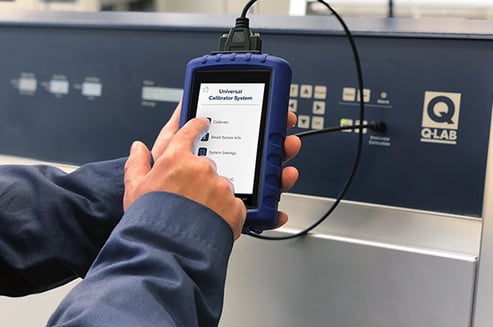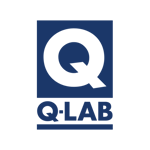Q-Lab strongly recommends regular calibration of irradiance sensors, black panel and chamber air temperature sensors, and relative humidity probes on our testers. This ensures the most consistent and accurate tester operation. Often, however, the term calibration is used when the proper term should be adjustment, or a combination of the two terms. The difference can be important for auditing and quality system purposes.
 A calibration procedure is one that involves a comparison to a known measurement standard. Often that standard is traceable back to a national metrological institute, for example NIST in the United States. An adjustment, on the other hand, is a procedure wherein a change is made to a measuring system so that it outputs proper values of the quantity to be measured. Although these procedures are often performed together, one does not require the other. A simple example to understand this framework is setting your wristwatch.
A calibration procedure is one that involves a comparison to a known measurement standard. Often that standard is traceable back to a national metrological institute, for example NIST in the United States. An adjustment, on the other hand, is a procedure wherein a change is made to a measuring system so that it outputs proper values of the quantity to be measured. Although these procedures are often performed together, one does not require the other. A simple example to understand this framework is setting your wristwatch.
1) You can compare the time on the watch to the official United States time, at time.gov. If the watch reads 10:55 and time.gov says 11:00, then your watch has been compared to a known reference and shown to be 5 minutes slow. This is a calibration.
2) You may take a flight to a neighboring time zone and move your watch ahead one hour to compensate. This is an adjustment. No comparison to a known standard is involved, but this adjustment should get the watch closer to displaying the correct time.
3) You can compare the time on your watch to time.gov and then set your watch to match that time as closely as possible. This is both calibration and adjustment. Q-Lab’s Universal Calibrator (UC) system makes use of both calibrations and adjustments. When you use a UC20 smart sensor, for example, to ensure correct lamp irradiance output every 500 hours in your Q SUN, that represents a calibration - comparison of onboard irradiance sensors to the UC20 reference - followed by an adjustment of the Q-SUN’s irradiance measurement system. Earlier, in the process, Q-Lab compares output values from a new UC20 smart sensor to a NIST-traceable irradiance standard. This is a calibration of the UC20, followed by an adjustment of the UC20 so it can provide the best possible readings when the device is sent to you.

